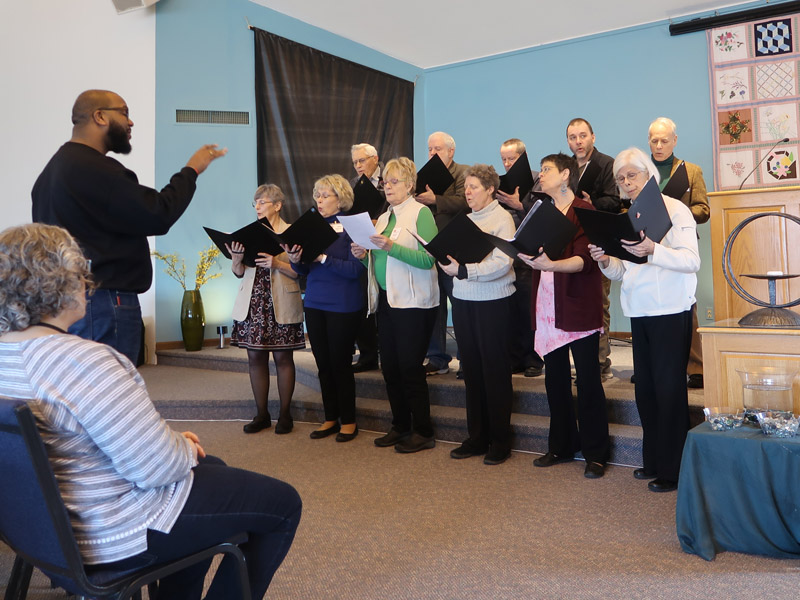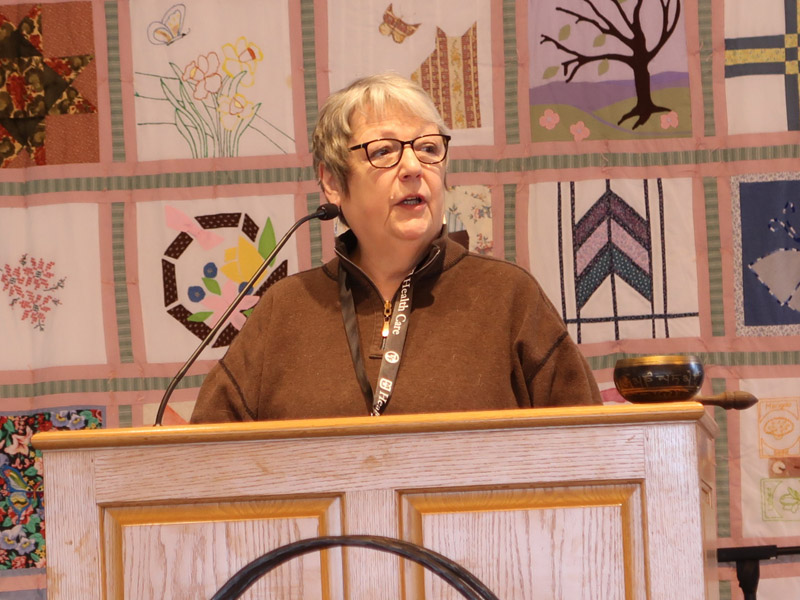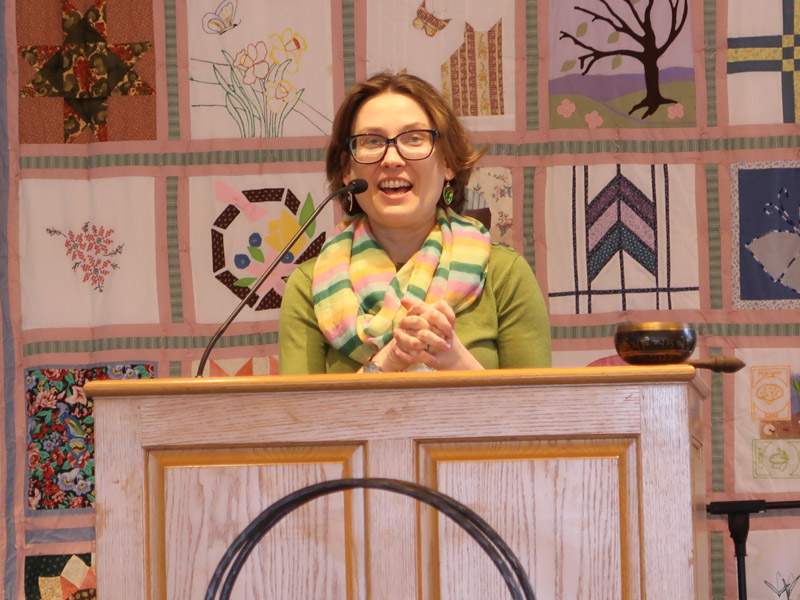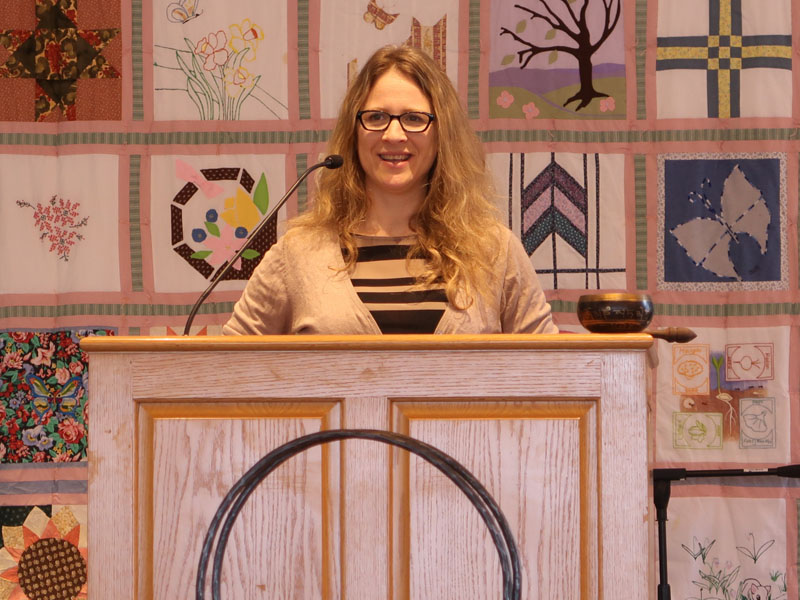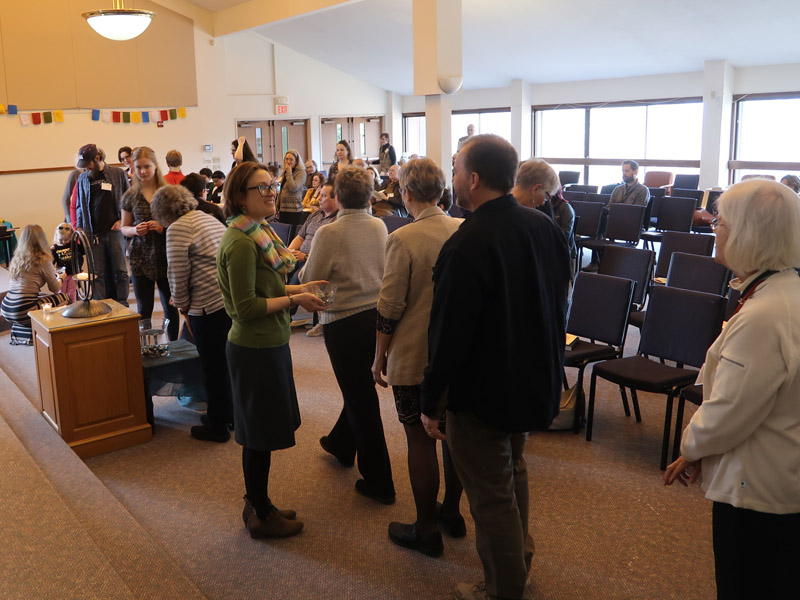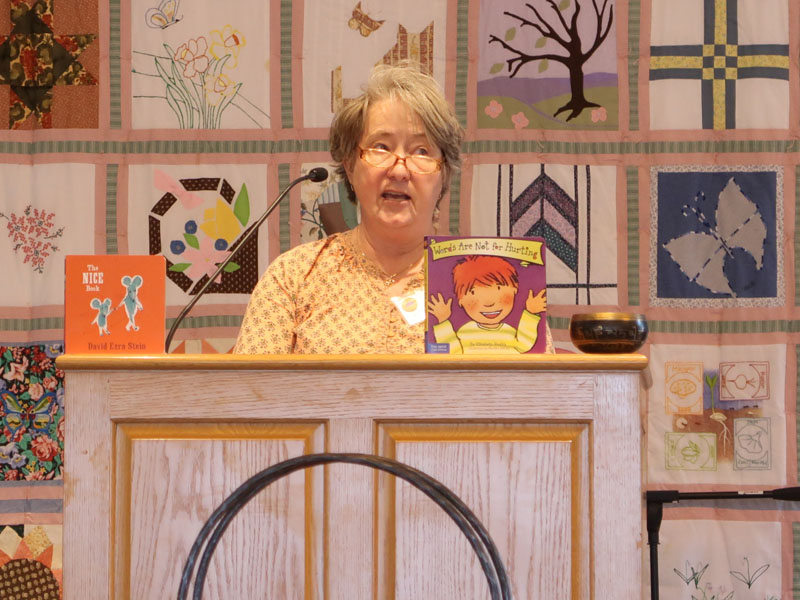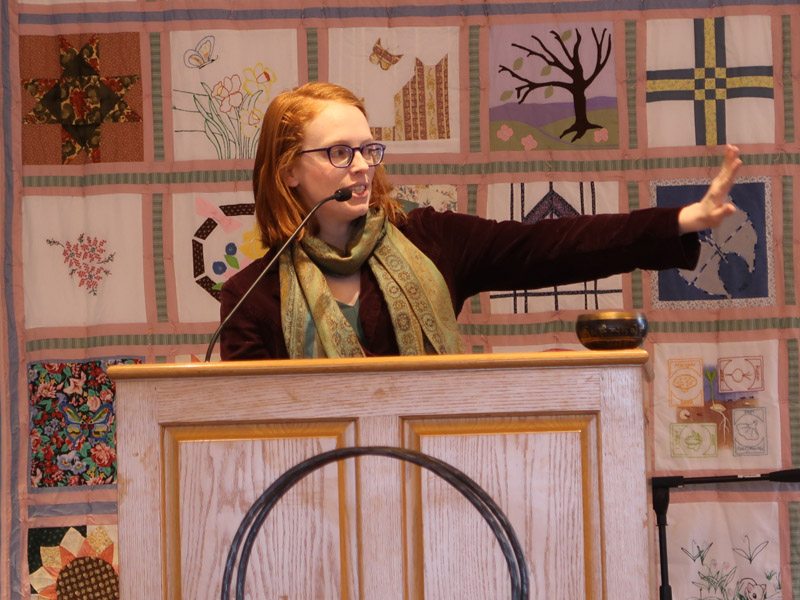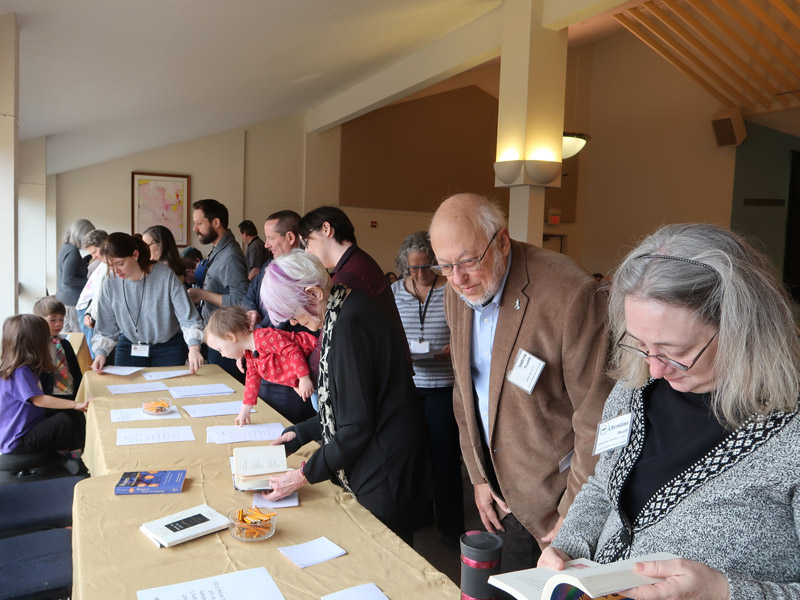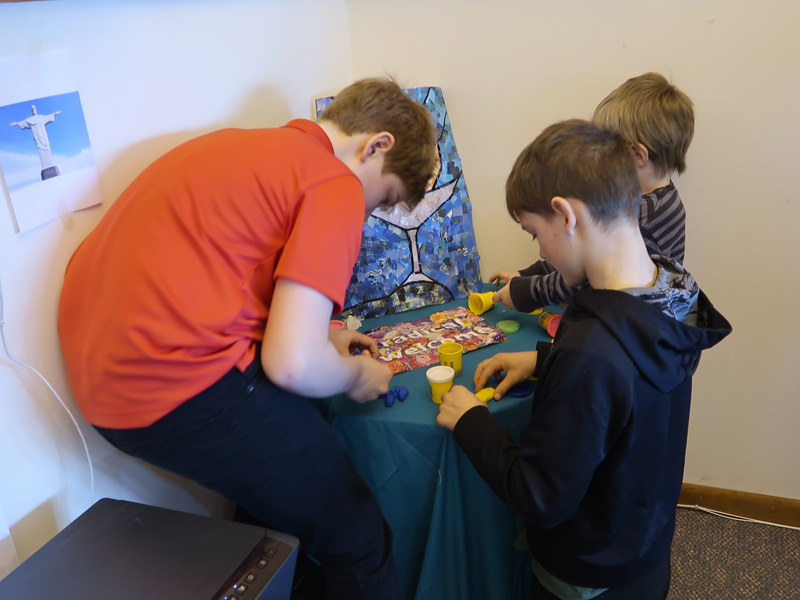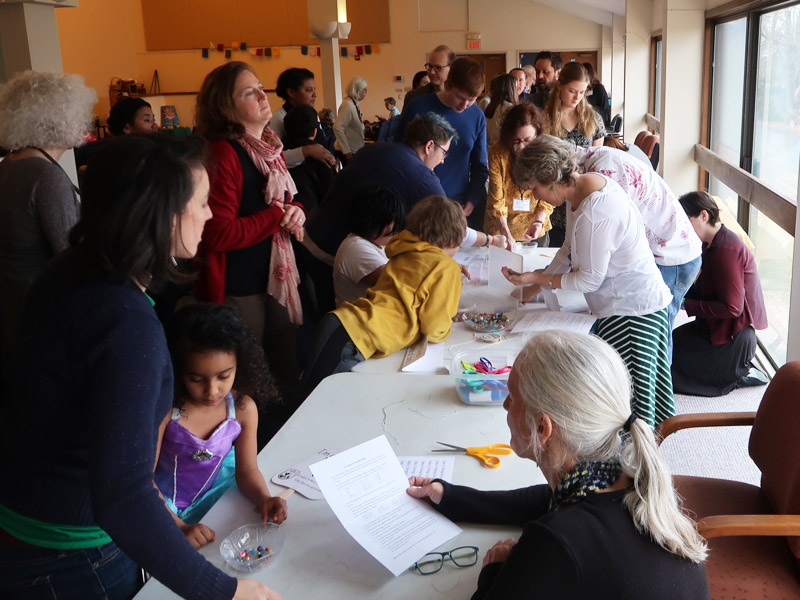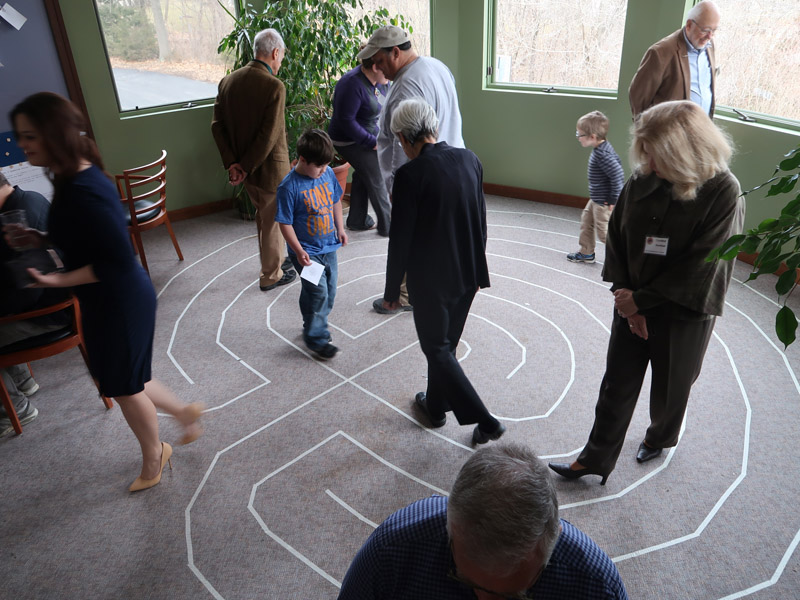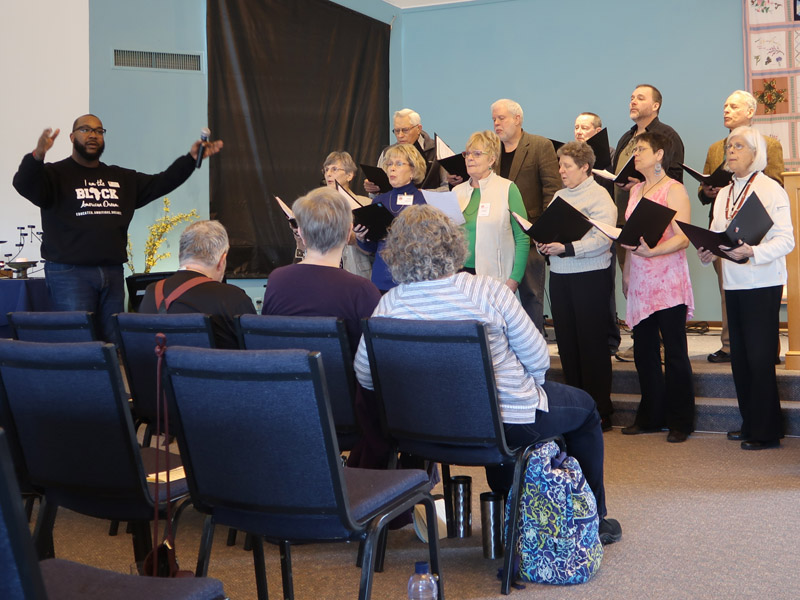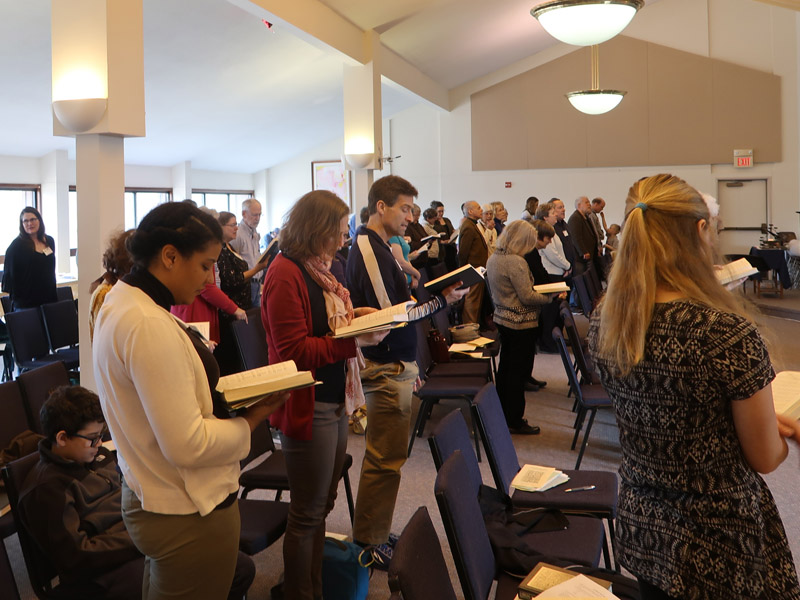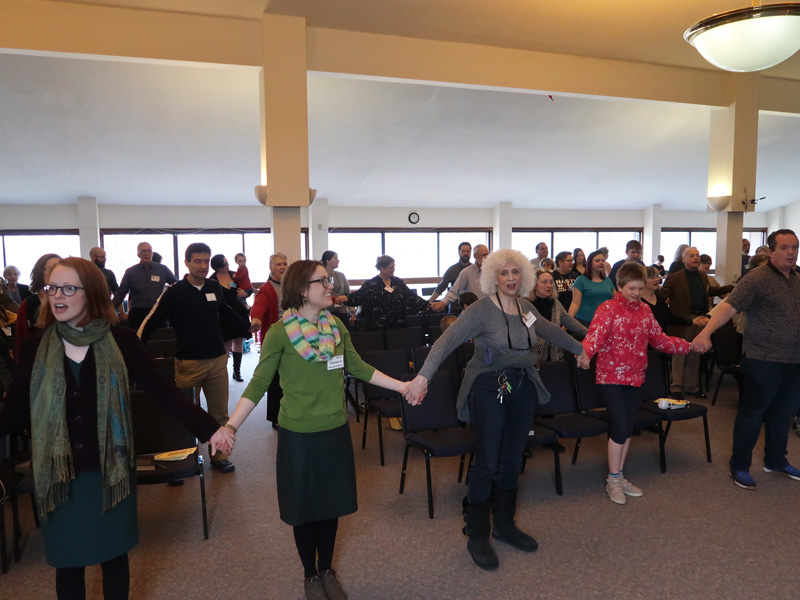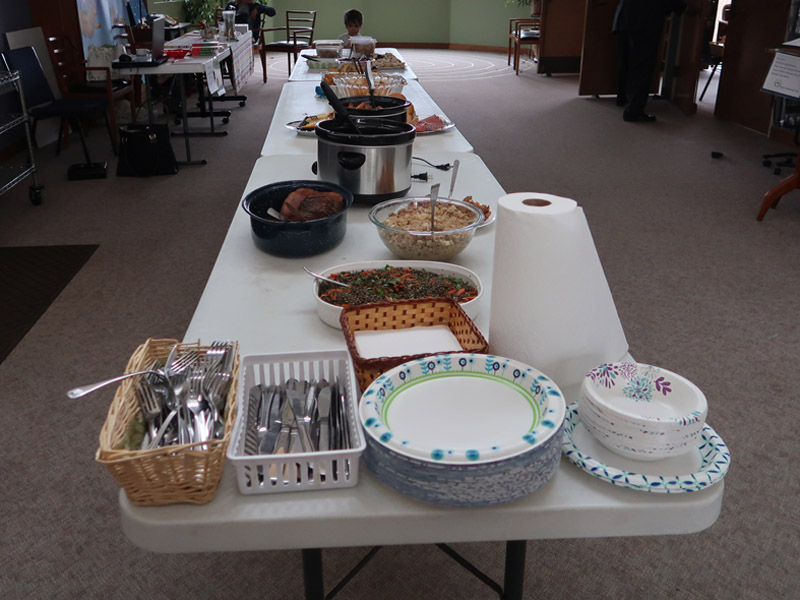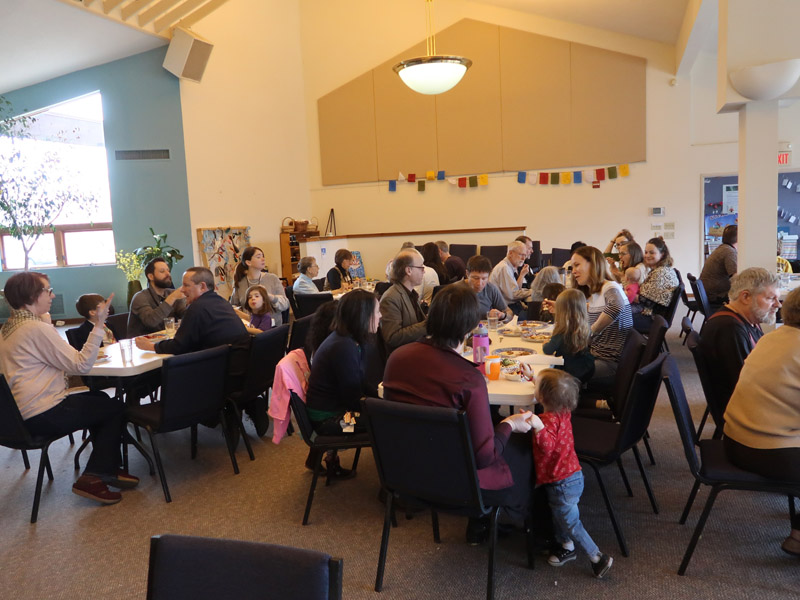March 10, 2019 – “On Prayer”
At worship on March 10, 2019, the topic was “On Prayer.” The poet Czeslaw Milosz writes:
“You ask me how to pray to someone who is not.
All I know is that prayer constructs a velvet bridge
And walking it we are aloft….”
We explored what prayer means for different Unitarian Universalists and visited stations to explore many different practices.
Four prayer stations, shown in the photo slideshow below, were set up:
- Touchstone Prayer: Find a prayer that speaks to your heart. Write it down. Carry it with you everywhere. Say it silently or out loud until you know it by heart.
- Icons/Altars: Many traditions use images or items as a focal point for devotion, reverence and opening to something outside ourselves. Think of an image upon which you might gaze to feel a sense of reverence or devotion, then pull it up on your phone and spend time with it. Think of an object that is sacred to you. Build a clay version of it to add to our altar.
- Prayer Beads: Prayer beads are used in various religious traditions as a way to keep track of the number of prayers you have said. Often there are particular prayers said on each bead. Through their pattern, they can give our prayers a structure that can deepen our prayer experience. But they are more than that. By giving us something to touch and hold onto, prayer beads bring us more fully into the space of prayer, ground ourselves in our body. The repeated physical rhythm of praying with beads turn the act of prayer into an embodied ritual. Take a moment to hold these prayer beads in your hand, and slide each bead forward with your thumb. Even without a spoken prayer, there is something reassuring and centering in the round shapes of the beads moving one by one against your finger.
- Labyrinth: Many churches are rediscovering an ancient prayer practice – a labyrinth. A labyrinth is a geometrically designed walking path leading to and from a central point. It is not a maze; you cannot get lost. There are no dead ends. The point is not disorientation, but orientation. Labyrinths have been used for centuries to facilitate prayer and meditation. There are several typical designs: the “classical” design of seven rings, and the “medieval” design of 11 circuits in four quadrants. Anyone can pray in a labyrinth. Here are two ways to get started: 1) Start your journey to the center with confession; when you reach the center, journey out with affirmation; pause at the exit and give thanks for your cleansing journey. 2) Lay down your burdens as you walk to the center of the labyrinth; in the center, pause to feel your burdens lifting; then count your blessings and give thanks on the journey to the exit.
After the 11 a.m. worship service, a stewardship celebration potluck was held.
The photos in the slideshow below were taken by Steve Scott. Click the arrows to see the next or previous photo.

